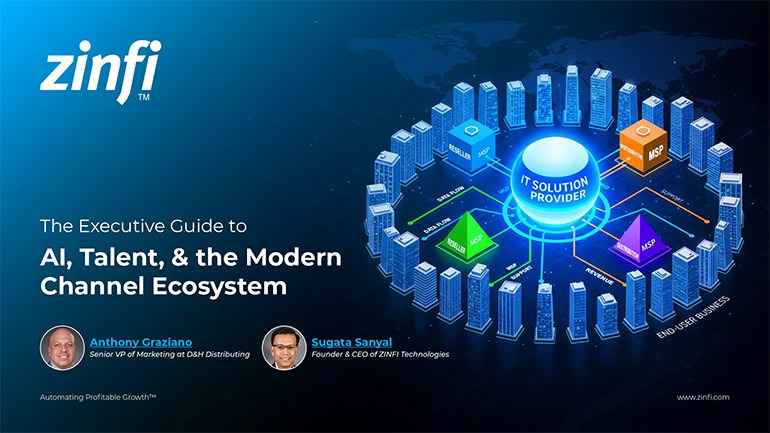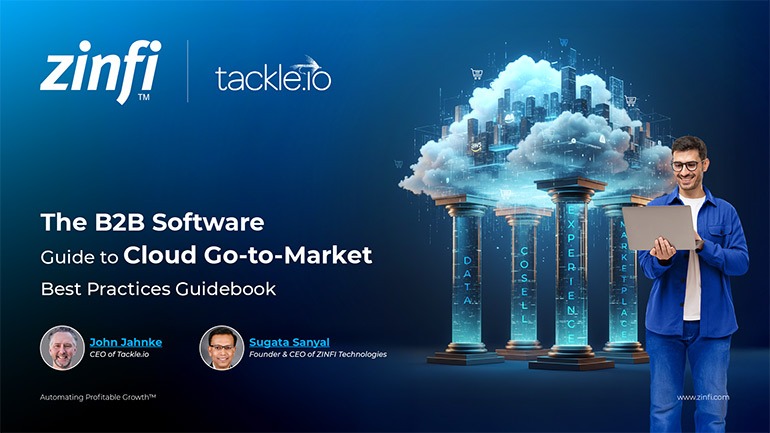Glossary - How to - Partner Portal Software
How to Select the Best Partner Portal Software?
Introduction
Defining Partner Portal Software
Partner portal software is a digital platform that empowers businesses to manage, support, and collaborate effectively with their channel partners. These portals provide centralized access to resources like training materials, marketing collateral, sales tools, pricing guides, and support services. By streamlining communication and providing real-time data access, partner portal software significantly improves the efficiency and success of partner programs.
In highly competitive ecosystems, where indirect sales channels are crucial for business expansion, robust partner portal software is not just an advantage but a necessity. It ensures seamless collaboration, boosts partner engagement, and fosters stronger relationships, increasing revenue.
Relevance to Partner Relationship Management (PRM)
Partner portal software is a foundational element of Partner Relationship Management (PRM) systems. PRM automation tools leverage partner portals to reduce administrative overhead, enhance partner experiences, and provide actionable insights into partner activities and performance.
Partner portal software enables vendors to deliver tailored experiences at scale by integrating CRM systems, marketing automation, learning management, and performance tracking into one platform. At ZINFI, our Unified Partner Management (UPM) platform exemplifies how automation and intuitive portal design empower partner networks for higher productivity and faster go-to-market execution. Without the right portal software, the scaling partner ecosystem becomes increasingly complex and inefficient.
Key Takeaways:
Understand Your Specific Partner Needs:
Before choosing any partner portal software, understand the unique needs of your partner ecosystem. Ask questions such as:
- Are partners struggling with accessing marketing materials?
- Do they need better onboarding and training?
- Is deal registration or lead management a pain point?
Different partners (resellers, distributors, MSPs) have varying requirements. Tailoring your portal functionalities to their needs ensures higher adoption rates and maximizes ROI.
Prioritize Customization and Branding:
Your partner portal should reflect your brand identity and messaging. Customizable layouts, personalized dashboards, and co-branding features create a seamless brand experience that builds trust with partners.
A generic, one-size-fits-all portal may fail to resonate with diverse partner types. Look for software solutions that allow you to customize partner journeys based on tiers, regions, or verticals.
Seamless Integration with Existing Systems:
The effectiveness of your partner portal software hinges on its ability to integrate with your existing systems, including:
- CRM (e.g., Salesforce, HubSpot)
- Marketing Automation (e.g., Marketo, Eloqua)
- Learning Management Systems (LMS)
- ERP platforms
Integrated workflows reduce manual work, provide a holistic view of partner activities, and enhance partner satisfaction.
Prioritize User Experience (UX) and Accessibility:
Even the most feature-rich partner portal will fail if it’s clunky or unintuitive. Prioritize:
- Mobile responsiveness
- Easy navigation
- Multi-language support
- Simple content search functionality
A positive user experience boosts partner engagement and satisfaction, directly influencing partner loyalty and performance.
Analytics and Reporting Capabilities:
Modern partner portal software must offer robust reporting and analytics to measure:
- Partner engagement levels
- Content usage
- Deal registration success
- Training completion rates
Advanced analytics allow vendors to make data-driven decisions to optimize partner programs over time.
Summary of Key Takeaways:
Selecting the right partner portal software involves a detailed evaluation of partner needs, the ability to customize and brand the portal, seamless system integration, prioritizing user experience, and leveraging analytics for continuous improvement. By focusing on these pillars, organizations can ensure the portal meets internal business goals and supports partner success at scale.
Investing in the right portal solution pays long-term dividends through stronger partnerships, increased revenue, and faster time-to-market.
Key Examples:
- Automotive Manufacturing: Automotive manufacturers use partner portals to manage complex distribution networks involving dealers, repair shops, and service providers. Customized dashboards help different types of partners access training materials, technical updates, warranty claim processes, and promotional campaigns.
- Consumer Electronics: Partner portal software is pivotal for managing global resellers and distributors in the consumer electronics industry. Automated content syndication ensures that product information, pricing, and marketing campaigns are always up-to-date across all sales channels.
- Energy Production: Energy companies use partner portals to collaborate with suppliers, contractors, and consulting firms. Features like document management, project tracking, and compliance monitoring ensure that energy projects run smoothly and partners stay compliant.
- Financial Services: In financial services, partner portals manage relationships with brokers, agents, and advisors. Key features include secure document sharing, compliance training, deal tracking, and real-time reporting dashboards for regulatory compliance.
- Food and Beverage: Food and beverage companies leverage partner portals to streamline supply chain operations, manage distributor promotions, and offer co-branding opportunities to retail partners, ensuring product placement and marketing consistency.
- Healthcare Services: Healthcare providers utilize partner portals to coordinate with insurance companies, suppliers, and technology partners. Portals offer HIPAA-compliant document sharing, claims processing updates, and training for compliance regulations.
- Information Technology: IT companies use partner portals for VARs (Value Added Resellers), MSPs (Managed Service Providers), and ISVs (Independent Software Vendors). Access to technical documentation, sales enablement content, and deal registration ensures partners can sell and support complex IT solutions.
- Pharmaceutical Development: Pharma companies need secure partner portals to collaborate with research organizations, distributors, and healthcare providers. Critical features include data sharing, clinical trial management updates, and compliance tracking.
- Retail Industry: Retailers use partner portals to connect with suppliers, franchisees, and logistics providers. A centralized portal helps manage promotional calendars, inventory management, and loyalty programs efficiently.
- Telecommunications: Telecom companies manage numerous channel partners like retailers, solution providers, and installation contractors through their portals. Self-service tools, pricing calculators, service provisioning guides, and SLA tracking drive partner success.
Conclusion:
Choosing the right partner portal software is vital for building a high-performing partner ecosystem. By focusing on partner needs, branding customization, seamless integrations, UX design, and actionable analytics, organizations can empower their partners to succeed.
Each industry vertical has specific needs that a flexible portal must cater to, whether it’s ensuring compliance in healthcare and finance or delivering up-to-date content for technology and telecom sectors.
ZINFI’s Unified Partner Management solutions offer comprehensive capabilities tailored to different industries and partner types, helping companies drive channel excellence through automation and innovation.
A well-designed partner portal boosts operational efficiency, strengthens partner loyalty, accelerates sales cycles, and maximizes revenue potential.
Associated Keywords:
- Best Partner Portal Software
- Partner Management Portal Solutions
- Partner Portal Automation Tools














